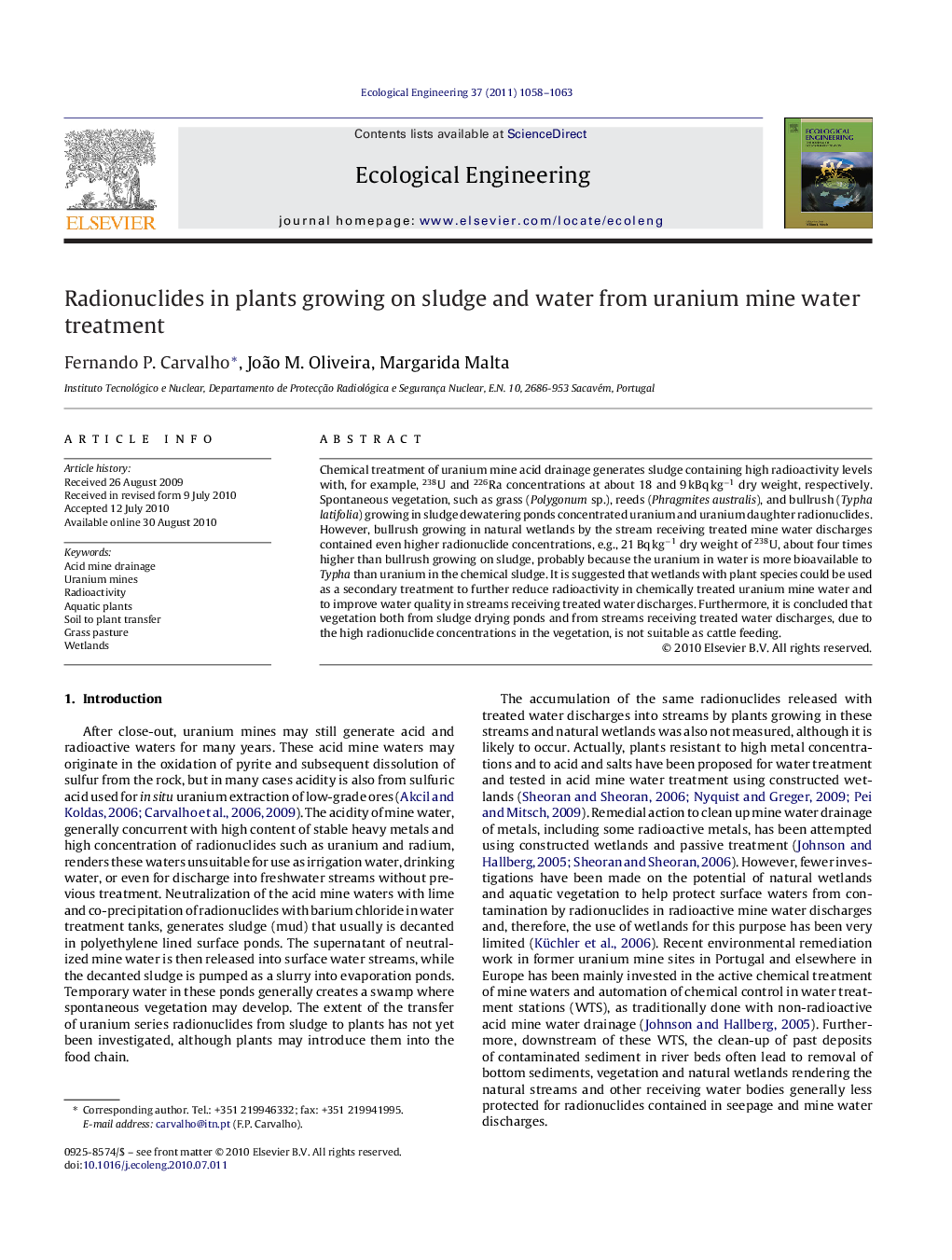| کد مقاله | کد نشریه | سال انتشار | مقاله انگلیسی | نسخه تمام متن |
|---|---|---|---|---|
| 4390377 | 1305169 | 2011 | 6 صفحه PDF | دانلود رایگان |

Chemical treatment of uranium mine acid drainage generates sludge containing high radioactivity levels with, for example, 238U and 226Ra concentrations at about 18 and 9 kBq kg−1 dry weight, respectively. Spontaneous vegetation, such as grass (Polygonum sp.), reeds (Phragmites australis), and bullrush (Typha latifolia) growing in sludge dewatering ponds concentrated uranium and uranium daughter radionuclides. However, bullrush growing in natural wetlands by the stream receiving treated mine water discharges contained even higher radionuclide concentrations, e.g., 21 Bq kg−1 dry weight of 238U, about four times higher than bullrush growing on sludge, probably because the uranium in water is more bioavailable to Typha than uranium in the chemical sludge. It is suggested that wetlands with plant species could be used as a secondary treatment to further reduce radioactivity in chemically treated uranium mine water and to improve water quality in streams receiving treated water discharges. Furthermore, it is concluded that vegetation both from sludge drying ponds and from streams receiving treated water discharges, due to the high radionuclide concentrations in the vegetation, is not suitable as cattle feeding.
Journal: Ecological Engineering - Volume 37, Issue 7, July 2011, Pages 1058–1063